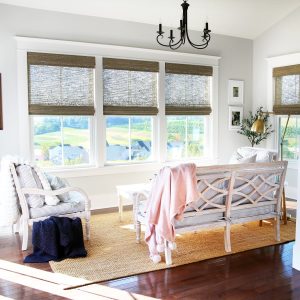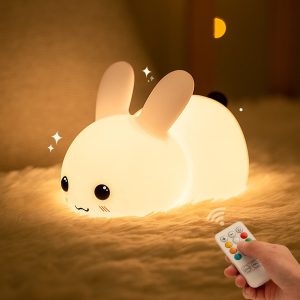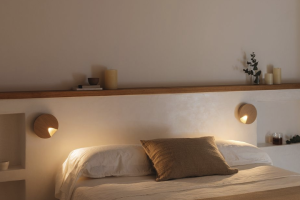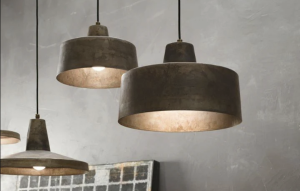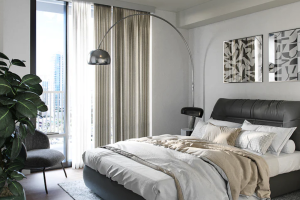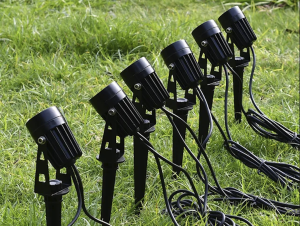Light Up Your Child’s Room: Tips and Tricks for Perfect Children’s Bedroom Lighting
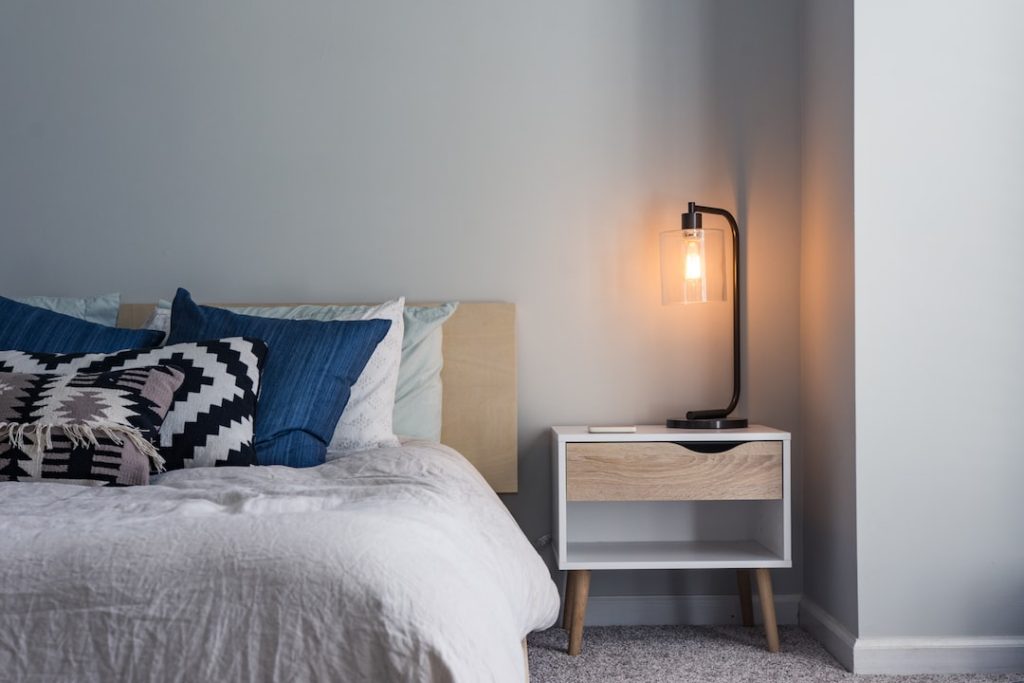
Proper lighting is an essential aspect of creating a safe and comfortable environment for your child. The right lighting can have a significant impact on their mood, behavior, and sleep patterns. In this article, we will explore the importance of proper lighting in a child’s room and provide tips and ideas for choosing the right lighting fixtures, bulbs, and positioning them effectively. We will also discuss how to use lighting to enhance your child’s mood and well-being, as well as how to incorporate fun and creative lighting ideas into their room.
Key Takeaways
- Proper lighting in your child’s room is important for their safety, comfort, and well-being.
- Types of lighting fixtures for children’s bedrooms include ceiling lights, table lamps, and night lights.
- Choosing the right bulbs for your child’s room involves considering brightness, color temperature, and energy efficiency.
- Creating a safe and comfortable lighting environment for your child involves avoiding glare, shadows, and flickering lights.
- Using lighting to enhance your child’s mood and well-being can be achieved through dimmer switches, color-changing bulbs, and natural light.
Understanding the Importance of Proper Lighting in Your Child’s Room
Lighting plays a crucial role in a child’s overall well-being. It can affect their mood, behavior, and even their sleep patterns. Bright, harsh lighting can be overstimulating and make it difficult for children to relax and wind down at the end of the day. On the other hand, dim or inadequate lighting can strain their eyes and make it challenging to focus on tasks such as reading or studying.
Choosing the right lighting huuly fixtures and bulbs is essential for creating a comfortable and functional space for your child. Ceiling lights provide general illumination and should be bright enough to light up the entire room evenly. Table lamps are great for task lighting, such as reading or doing homework. Nightlights are essential for providing a soft, comforting glow during the night without disturbing your child’s sleep.
Types of Lighting Fixtures for Children’s Bedrooms
There are several types of lighting fixtures that you can consider for your child’s bedroom. Ceiling lights are the most common type of fixture and provide general illumination for the entire room. They come in various styles, including flush mount lights that sit close to the ceiling or pendant lights that hang down from the ceiling.
Table lamps are another popular option for children’s bedrooms. They provide localized task lighting and can be placed on bedside tables or desks for reading or studying. Table lamps come in a wide range of designs, from whimsical and colorful to sleek and modern.
Nightlights are essential for providing a soft, comforting glow during the night. They can help children feel secure and prevent them from being afraid of the dark. Nightlights come in various shapes and sizes, including plug-in nightlights, portable nightlights, and even nightlights that project stars or other images onto the ceiling.
Each type of lighting fixture has its pros and cons. Ceiling lights provide overall illumination but may not be suitable for task lighting. Table lamps are great for task lighting but may take up valuable space on bedside tables or desks. Nightlights provide a comforting glow but may not be bright enough for reading or other activities.
Choosing the Right Bulbs for Your Child’s Room
| Bulb Type | Wattage | Color Temperature | Dimmable | Price |
|---|---|---|---|---|
| LED | 9-12 watts | 2700-3000K | Yes | 10-20 |
| Fluorescent | 13-15 watts | 2700-3000K | Yes | 5-10 |
| Incandescent | 40-60 watts | 2700K | No | 1-5 |
Choosing the right bulbs for your child’s room is just as important as selecting the right fixtures. There are several types of bulbs to consider, including LED, incandescent, and fluorescent.
LED bulbs are energy-efficient and long-lasting. They produce bright, white light that is ideal for task lighting. LED bulbs also come in various color temperatures, ranging from warm white to cool white, allowing you to create the desired ambiance in your child’s room.
Incandescent bulbs are the traditional choice and produce a warm, soft light. However, they are not as energy-efficient as LED bulbs and have a shorter lifespan.
Fluorescent bulbs are energy-efficient but can produce harsh, cool light. They are often used in overhead fixtures but may not be suitable for creating a cozy atmosphere in your child’s room.
When choosing bulbs for your child’s room, consider their needs and preferences. If they enjoy reading or doing homework in their room, opt for LED bulbs with a higher color temperature for better visibility. If they prefer a warm and cozy ambiance, choose incandescent bulbs with a lower color temperature.
How to Create a Safe and Comfortable Lighting Environment for Your Child
Creating a safe and comfortable lighting environment for your child involves considering several factors. First and foremost, safety should be a top priority when choosing and positioning lighting fixtures. Ensure that all fixtures are securely installed and out of reach of your child. Use cord covers or cord clips to keep cords out of the way and prevent tripping hazards.
Consider the brightness of the lighting in your child’s room. Bright, harsh lighting can be overstimulating, especially in the evening when they are winding down for bed. Opt for dimmable lights or use lampshades to diffuse the light and create a softer glow.
It’s also important to consider the color temperature of the bulbs you choose. Cooler color temperatures, such as daylight or cool white, can be energizing and may interfere with your child’s ability to relax and fall asleep. Warmer color temperatures, such as soft white or warm white, create a more soothing and calming atmosphere.
Using Lighting to Enhance Your Child’s Mood and Well-being

Lighting can have a significant impact on your child’s mood and well-being. Bright, natural light during the day can help regulate their circadian rhythm and improve their overall mood and energy levels. On the other hand, dimmer, warmer lighting in the evening can signal to their body that it’s time to wind down and prepare for sleep.
Consider using dimmable lights or installing smart lighting systems that allow you to adjust the brightness and color temperature of the lights throughout the day. This can help create a more dynamic lighting environment that aligns with your child’s natural sleep-wake cycle.
You can also use lighting to create different moods or themes in your child’s room. For example, using colored LED bulbs or string lights can add a playful and whimsical touch to their space. Experiment with different lighting arrangements and colors to find what works best for your child.
Incorporating Fun and Creative Lighting Ideas for Your Child’s Room
In addition to providing functional lighting, incorporating fun and creative lighting ideas can add personality and style to your child’s room. String lights are a popular choice and can be hung along walls, draped over furniture, or even used to create a canopy effect above the bed.
Light-up wall art is another creative option. These are typically wall-mounted fixtures that feature fun and colorful designs. They can serve as both decorative pieces and functional lighting sources.
You can also consider using light projectors that display images or patterns on the walls or ceiling. These can create a magical and immersive atmosphere in your child’s room.
When incorporating fun and creative lighting ideas, be mindful of safety considerations. Ensure that all fixtures are securely installed and do not pose any hazards to your child.
Tips for Maximizing Natural Light in Your Child’s Room
Natural light is beneficial for your child’s overall well-being. It provides essential vitamin D, improves mood, and helps regulate their sleep-wake cycle. Maximizing natural light in your child’s room involves several considerations.
First, ensure that windows are unobstructed and allow ample sunlight to enter the room. Avoid heavy curtains or blinds that block out natural light. Instead, opt for sheer curtains or blinds that can be easily opened during the day.
Consider the placement of furniture in relation to windows. Avoid placing large pieces of furniture in front of windows, as they can block sunlight from entering the room. Instead, position furniture to the sides of windows to allow for maximum natural light.
If privacy is a concern, consider using window films or blinds that allow light to pass through while still providing privacy.
How to Properly Position Lighting Fixtures in Your Child’s Room
Properly positioning lighting fixtures is essential for creating an effective lighting environment in your child’s room. Ceiling lights should be positioned in the center of the room to provide even illumination. If the room is large, consider using multiple ceiling lights or installing recessed lighting to ensure adequate coverage.
Table lamps should be placed on bedside tables or desks to provide localized task lighting. Position them at a height that allows for comfortable reading or studying without causing glare or shadows.
Nightlights should be strategically placed to provide a soft, comforting glow without disturbing your child’s sleep. Consider placing them near the bed or in areas where your child may need to navigate during the night, such as near the door or bathroom.
Decorating with Lighting: Adding Style and Personality to Your Child’s Room
Lighting can play a significant role in decorating your child’s room and adding style and personality. Consider using lighting fixtures that match the theme or color scheme of the room. For example, if your child’s room has a nautical theme, consider using a pendant light in the shape of a ship’s wheel or a table lamp with a base shaped like a lighthouse.
You can also use lighting to highlight specific areas or features in the room. For example, use spotlights or track lighting to draw attention to artwork or shelves displaying your child’s favorite toys or books.
Consider using colored LED bulbs or string lights to create a playful and whimsical atmosphere. You can use them to create a canopy effect above the bed, outline shelves or windows, or even spell out your child’s name on the wall.
Maintaining Your Child’s Room Lighting: Tips for Cleaning and Maintenance
Proper cleaning and maintenance of your child’s room lighting fixtures and bulbs are essential for their longevity and performance. Regularly dust and wipe down fixtures to remove dirt and grime. Use a soft cloth or sponge and mild cleaning solution to avoid scratching or damaging the fixtures.
Replace bulbs as needed, following the manufacturer’s instructions. Keep spare bulbs on hand so that you can quickly replace them when necessary.
Check cords and plugs regularly for any signs of wear or damage. If you notice any frayed wires or loose connections, replace the cord or fixture immediately to prevent electrical hazards.
Proper lighting is crucial for creating a safe, comfortable, and functional environment for your child. It can have a significant impact on their mood, behavior, and sleep patterns. By understanding the importance of proper lighting and implementing the tips and ideas discussed in this article, you can create a space that promotes your child’s well-being and allows them to thrive. Remember to consider their needs and preferences when choosing lighting fixtures and bulbs, and don’t be afraid to get creative and have fun with lighting in their room.

